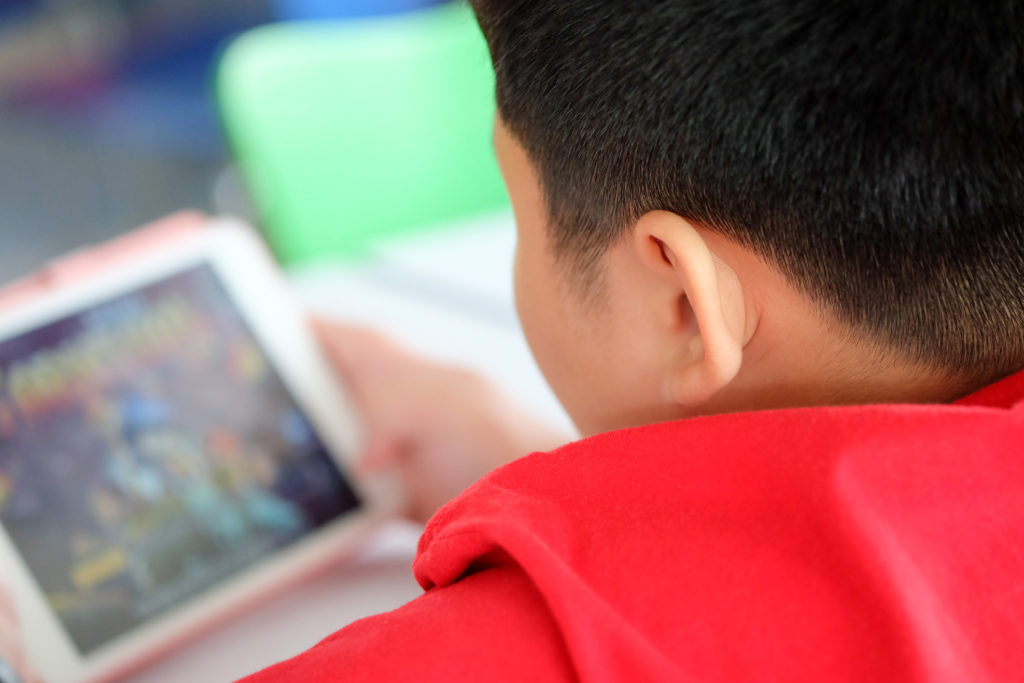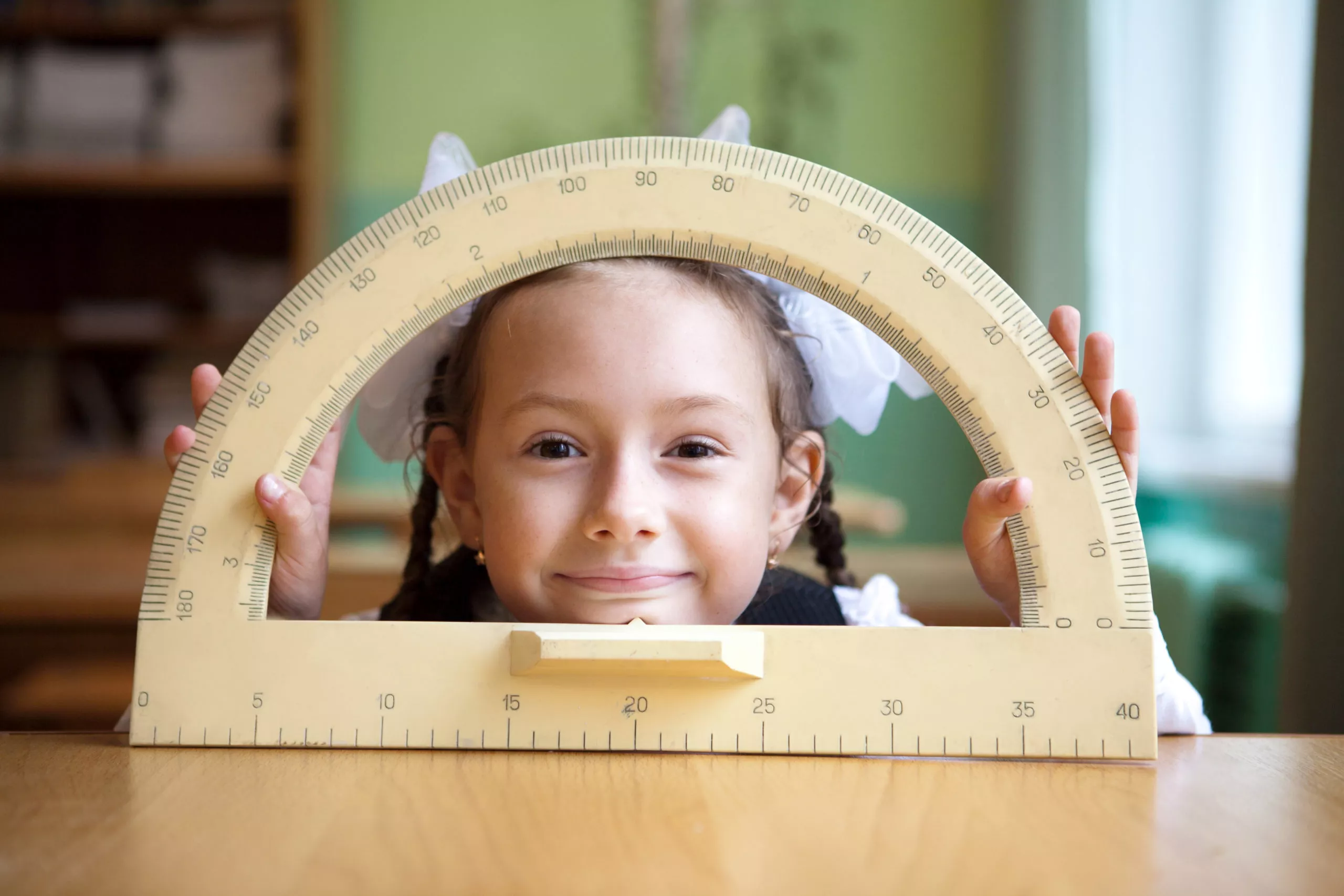
More than ever, digital devices are a staple in education, entertainment, and connection. Yet, screen time can lead to digital eye strain and can put children’s ocular health in danger.1 While we can’t eliminate devices and it can be hard to enforce strict guidelines when technology plays such a central role in our lives, we can tap into that same technology to encourage better digital device habits.
First, let’s talk about why this is so important.
A June 2020 study by the American Academy of Pediatrics shows many parents don’t fully understand how much time their children are spending on devices like smartphones and iPads.
About 35% of parents underestimated how much screen time their child was getting. Researchers used an app to track the actual time children ages 3 to 5 years old used devices and compared it to their parents’ estimates. They found the average screen time was just under 2 hours, or 115 minutes a day.2
Extended periods of time viewing a computer, tablet, e-reader, or cell phone can result in digital eye strain.3 Issues such as headaches, irritated eyes, and irritability can increase with the amount of digital screen use.4 These issues aren’t the only concern. Nearsightedness, also known as myopia, is increasing at an alarming rate in children in the U.S.5, and too much up-close work, including use of cell phones and digital devices, has been linked to the development of nearsightedness.6 [Read: Can too much screen time hurt my child’s vision?]
The American Academy of Pediatrics recommends avoiding digital media for toddlers younger than 18 to 24 months other than video chatting. For preschool children, ages 2 to 5, limit screen time to just one hour a day of high-quality programming, co-engaging when possible.
To encourage better digital device habits and help kids take frequent breaks from screens, we’ve curated a list of some tools that might help your children develop healthier relationships with their devices.

Managing screen time
Plano app
- For Android and iOS.
Plano is a science-based parental control app that helps parents manage screen time, internet safety, and eye health. The app, which has both a free and paid version, offers tools like eye break reminders, face-to-screen distance, low light detection, device use and myopia reports, and posture monitoring.
>> Learn more about the Plano App here.
Screen Time Parental Control app
- For Android, iOS, and Kindle.
The Screen Time Parental Control App gives parents a way to reward kids with screen time after they complete specific activities like homework or chores. Parents can also preset blocked periods of time like bedtime from their own phone. The purpose of Screen Time, which offers both a free and paid version, is to help kids understand a healthy device time limit.
>> Learn more about the Screen Time Parental Control App here.
unGlue
- Works across desktops, laptops, smartphones, and gaming consoles.
unGlue’s mission is to set boundaries, not rules and it does that by aiming to empower kids. Parents can set boundaries by bundling apps, websites, and games into categories and setting a time limit on each. With the app, kids can also track their own screen time and gain more time by completing tasks like a specific number of daily steps and household chores.
>> Learn more about unGlue here.
Screen Time, Apple device feature
- For iPhone, iPad, and iPod touch.
Screen Time, a feature built into Apple devices with an iOS 12 or later, allows you to access real-time reports about how much time you or your child spend on an iPhone, iPad, or iPod touch, and set limits for what you want to manage. You can see how much time kids spend on apps, websites, and more to make informed decisions about device use and set limits.
>> Learn more about Screen Time for Apple devices.
Digital Wellbeing, Google device feature
- For Android.
Google offers a feature similar to Apple’s Screen Time for Android devices called Digital Wellbeing. Digital Wellbeing charts what you do and for how long, and also offers features like turning the screen gray at night to remind you to put your phone down, or it even disables apps after a set time. Google also offers a helpful family conversation guide that helps engage families in discussions about navigating the digital world together.
>> Learn more about Digital Wellbeing for Google devices.

Decreasing blue light exposure
[Read: Should I be worried about the blue light from devices affecting my kids’ vision?]
Night Shift, Apple device feature
- For iPhone, iPad, and iPod touch.
Night Shift, a feature available on your iPhone, iPad, and iPod touch automatically adjusts the colors of the display to the warmer end of the spectrum—making the display easier on the eyes. Night Shift uses the clock and geolocation of your device or your child’s device to determine when it’s sunset in your location. Then it automatically shifts the colors of your display. In the morning, it returns the display to its regular settings.
>> Learn more about Night Shift for Apple devices.
f.lux app
- For macOS.
Reducing blue light from a screen may help to reduce eye strain.7 f.lux is an app that tints the screen darker and darker as the sun sets and nears to your child’s bedtime. You can select a wake up time, so the tint will appropriately adjust.
>> Learn more about the f.lux app here.
Blue light glasses
Blue light glasses, or computer glasses, are made with a coating that blocks harmful blue light that can damage your eyes and disrupt your regular sleep patterns. You can buy blue light lenses with any prescription-strength—or you can buy blue light glasses without a prescription.8
When setting digital device boundaries with children it’s important that they understand the purpose of healthy screen time habits. And, when possible, model the behavior you’re asking of your kids.
As recommended by the American Academy of Pediatrics, preserve offline experiences9 and as much as possible encourage kids to spend time outdoors. Spending more time outside decreases the risk of new myopia onset in children by 50%.10, 11 Here’s a checklist of simple outdoor activities that you can print and hang on the refrigerator or wall.
If you have additional tools that have worked well to establish healthy digital device habits in your own home, please let us know and we’ll include them in the list.
Tags: screen time, digital devices, children and screens, apps

